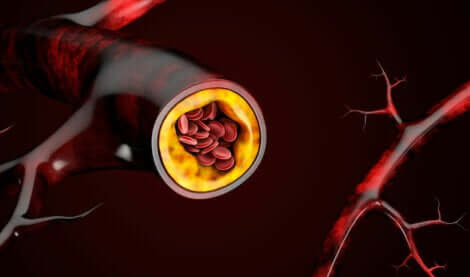World Lipodystrophy Day: Why is it Celebrated?

Rare diseases are a common topic of discussion in the health world. Today, we’ll be focusing on lipodystrophy, which is a condition that affects 4.7 people per million. Given its rarity, progress in its treatment has been slow, which is why World Lipodystrophy Day is so important.
This day is celebrated on March 31st. The basic reasons for this day are entrepreneurship, awareness, exposure, and the creation of strategic alliances that will help push progress forward in different areas of the world.
To give you a better understanding of what World Lipodystrophy Day is, we’ll talk about the goals of celebrating this day, which activities are involved, the importance of raising awareness, and how you could contribute.
What is lipodystrophy?
Lipodystrophy is a disease that affects adipose tissue. In other words, it causes fat distribution in different parts of the body to be uneven.
What effects does this condition have on the body? First, you have to understand the importance of fatty tissues in the body. One of its essential functions is energy storage. In addition, it influences the metabolic balance. Those who suffer from lipodystrophy have reduced amounts of adipose.
As a result, the body starts looking for other organs where it can store fat. That’s how ectopic fat appears. This fat is the one that accumulates outside the adipose tissue itself.
Then, the ectopic fat in people with lipodystrophy majorly affects the pancreas, liver, and some muscles.
From there, ectopic fat can cause some large deficiencies in the body. Some of those disturbances include:
- Diabetes
- Liver inflammation
- Sub-fertility (inability to get pregnant after 1 year of trying)
- High triglycerides in the blood
- Increased risk of heart disease
- Lactic acidosis
- Formation of lipomas

Discover: What Are Autoinflammatory Diseases?
World Lipodystrophy Day
As we mentioned, World Lipodystrophy Day is March 31. The first time this day was celebrated was in 2013. Since then, it has only continued to grow.
This event is made possible each year thanks to the International Association of Relatives and People Affected by Lipodystrophies (AELIP). Also, this organization works together with other organizations, like the European Organization for Rare Diseases (EURORDIS) and the Spanish Federation of Rare Diseases (FEDER), among others.
Goals of this day
The goals of this day are the keys to defining and measuring the continued growth of the celebration each year. These are some of the pre-established goals:
- Raise awareness about lipodystrophy and the limitations in terms of treatment.
- Raise awareness about the deterioration in the quality of life of those affected.
- Stop excluding people who suffer from this disease.
- Report on the differentiation of lipodystrophy compared to other diseases.
- Obtain financial resources from various efforts so that patients can get the treatment they need.
- Encourage governments to allocate resources to research.
Activities
Before each new event, they hold a meeting to coordinate any changes and to discuss the activities. Among the initiatives are:
- Improvement of the existing manifesto of World Lipodystrophy Day with ideas from patient associations.
- Campaign on social networks with a fixed hashtag: #WorldLipodystrophyDay. This hashtag will only change according to the year of the event.
- Use of the additional tag #United4Lypodystrophy. Also, it can be translated into any language.
- Charity events to raise funds. This activity will return when health conditions worldwide will allow it.
- Information days.
Why is it important to talk about lipodystrophy?
It’s important to talk about lipodystrophy because it puts relevant research and development on the public investment map. It helps people understand how the disease works. In addition, it offers greater possibilities for social adaptation to those affected.
Also, it ensures that patients with lipodystrophy have access to medications that will improve their quality of life. Finally, since not much is known about this disease, making it known globally means that a greater number of people will be able to access up-to-date information.
Keep reading: Treat Your Fatty Liver With These 5 Artichoke Recipes
How can I contribute to World Lipodystrophy Day?
Any efforts you make will be well received by those who struggle with lipodystrophy every day. There are specific ways you can contribute to World Lipodystrophy Day from anywhere on the globe.
Here are some of them:
- Posting a photo: ideally, you want to upload a photo making an “L” with your fingers. This is the symbol of support for those with this disease.
- Use the hashtags: write a message of support on social media with the hashtags #WorldLipodystrophyDay and #United4Lipodystrophy.
- Get support from someone famous: if you have a friend that’s well-known locally or worldwide, a great way to contribute is to get them to make a video with a message about it.
- Send a drawing: another option is to make a drawing for someone who is ill using the official template. You just have to download it and, when you’re done, upload it to social media.
- Share the manifesto: share and send the official manifesto of World Lipodystrophy Day to demonstrate the goals of this day.

World Lipodystrophy Day doesn’t discriminate
Integrating lipodystrophy into public health systems is one of the major goals that we seek to promote every year. Although perseverance levels are high, substantial progress is lacking.
Therefore, as long as total guarantees aren’t being given to those who are ill, we recommend including knowledge of this condition in society and eliminating discrimination.
You can help as long as you’re showing empathy and are raising awareness that could change people’s lives. Ultimately, we’re going to keep fighting to make sure no one is left behind.
Be part of the change!
All cited sources were thoroughly reviewed by our team to ensure their quality, reliability, currency, and validity. The bibliography of this article was considered reliable and of academic or scientific accuracy.
- Araújo D. Lipodistrofias: bases moleculares y manifestaciones clínicas. Endocrinología y Nutrición. 2003. Disponible en: https://doi.org/10.1016/S1575-0922(03)74513-6
- Cortés V y Santos J. Lipodistrofias primarias: presentación clínica y diagnóstico. Rev. Méd. 2019. Disponible en: http://dx.doi.org/10.4067/S0034-98872019001101449
- Delgado L e Ingen-Housz-Oro S. Enfermedades del tejido adiposo: lipomas, lipomatosis, lipodistrofias. 2012. Disponible en: https://doi.org/10.1016/S1761-2896(12)60830-9
- Figueiredo P, Val A, Diamante R, Cunha C, Norton R y Lamounier J. Lipodistrofia generalizada congênita. J. Pediatr. 2004. Disponible en: http://www.scielo.br/scielo.php?script=sci_arttext&pid=S0021-75572004000500015&lng=en. https://doi.org/10.1590/S0021-75572004000500015.
- Seip M y Trygstad O. Lipodistrofia generalizada, congénita y adquirida (lipoatrofia). Acta Paediatr Suppl. 1996.
This text is provided for informational purposes only and does not replace consultation with a professional. If in doubt, consult your specialist.








